DOUZONE Eulji Tower of DOUZONE ICT GROUP
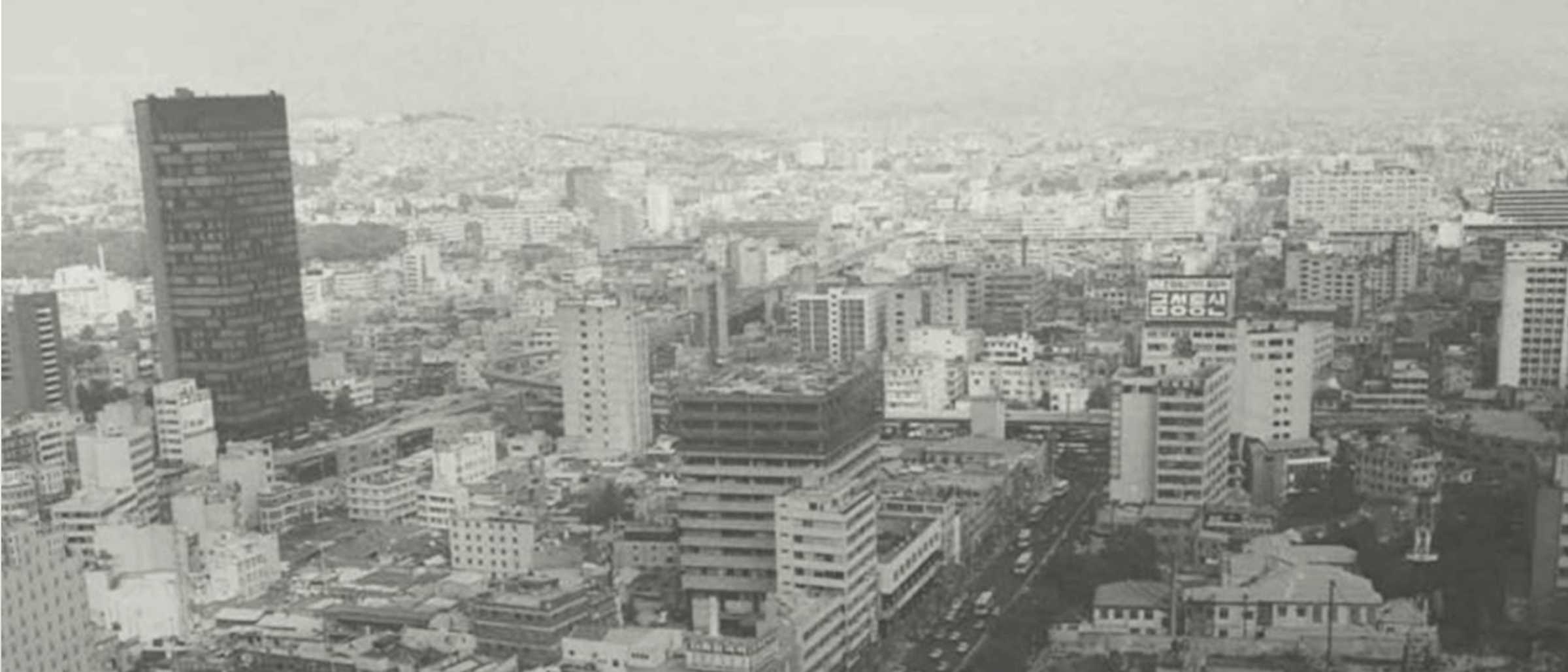
At DOUZONE Eulji Tower
Written by Cultural Commentator Han Yi-su
These days, Seoul is divided by Han River. Gangbuk and Gangnam are located on each side of Han River. But, not so long ago, it was Hanyangdoseong that divided Seoul - inside or outside of the wall. Then, if you are asked to pick a central area inside the four major gates, what would you pick? It must be Jongro. There is a stone that clearly shows the center of Seoul at Jung-ang Building in Insa-dong, Jongro. However, the status of Jongro decreased significantly during the Japanese colonial period.
Why? It is because Euljiro emerged as the center of Seoul.
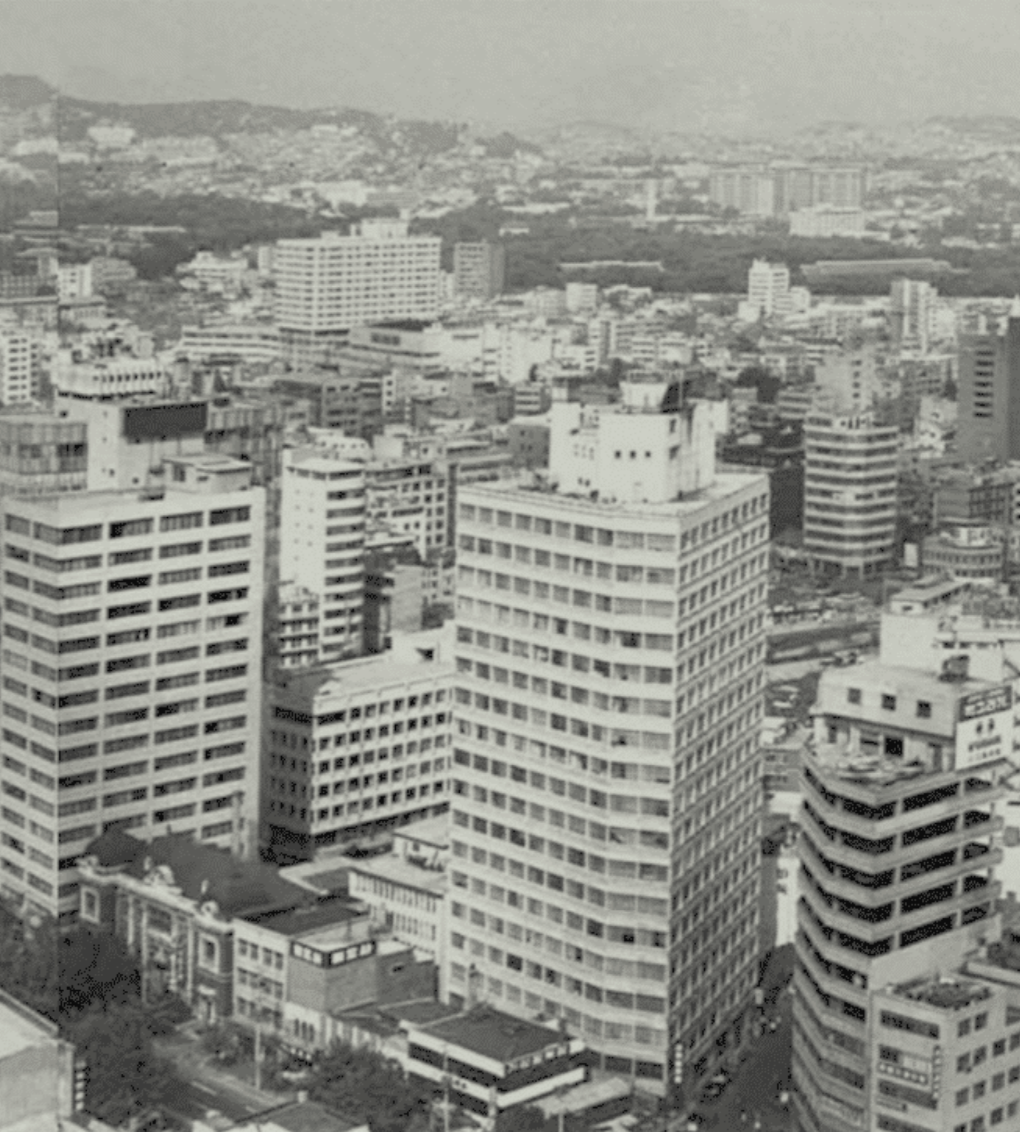
DOUZONE Eulji Tower
The starting point of Euljiro
Eulji-ro used to be called ‘Hwanggeum-jeong (黃金町, Kogane-machi)’ during the Japanese colonial period.
In the Joseon Dynasty, there was a large hill which looked like copper reflected in the sunlight since the ground was dark and red. That's why it was called as 'Guri-gae.' 'Dong-hyeon (銅峴)' was the name of the area after the Gabo Reform with the Chinese character '銅' which means copper. Then, when did it start to be called Euljiro? It is after the restoration of independence. During the occupation period, there was a Chinatown around Supyogyo Bridge in Eulji-ro. In order to suppress their spirit, people started to call the area 'Eulji-ro' which was named after Eulji Mundeok who defeated 1 million troops against Sui dynasty of China. During the Japanese colonial period, the area was divided into the north of Cheonggyecheon (Bukchon, mainly Jongno, and old city center) and the south of Cheonggyecheon (Namchon and Hwanggeum-jeong (Eulji-ro)). As many Japanese people lived in Eulji-ro with their culture and industry, it became the most popular area of the town. In terms of popularity, it is comparable to today's Gangnam. Seoul City Hall is situated at the entry point of Eulji-ro, and DOUZONE Eulji Tower is located right next to it. September 20, 1977. The area around Jongno, Eulji-ro and Namdaemun-ro (Source: Seoul Museum of History)
In the Joseon Dynasty, there was a large hill which looked like copper reflected in the sunlight since the ground was dark and red. That's why it was called as 'Guri-gae.' 'Dong-hyeon (銅峴)' was the name of the area after the Gabo Reform with the Chinese character '銅' which means copper. Then, when did it start to be called Euljiro? It is after the restoration of independence. During the occupation period, there was a Chinatown around Supyogyo Bridge in Eulji-ro. In order to suppress their spirit, people started to call the area 'Eulji-ro' which was named after Eulji Mundeok who defeated 1 million troops against Sui dynasty of China. During the Japanese colonial period, the area was divided into the north of Cheonggyecheon (Bukchon, mainly Jongno, and old city center) and the south of Cheonggyecheon (Namchon and Hwanggeum-jeong (Eulji-ro)). As many Japanese people lived in Eulji-ro with their culture and industry, it became the most popular area of the town. In terms of popularity, it is comparable to today's Gangnam. Seoul City Hall is situated at the entry point of Eulji-ro, and DOUZONE Eulji Tower is located right next to it. September 20, 1977. The area around Jongno, Eulji-ro and Namdaemun-ro (Source: Seoul Museum of History)
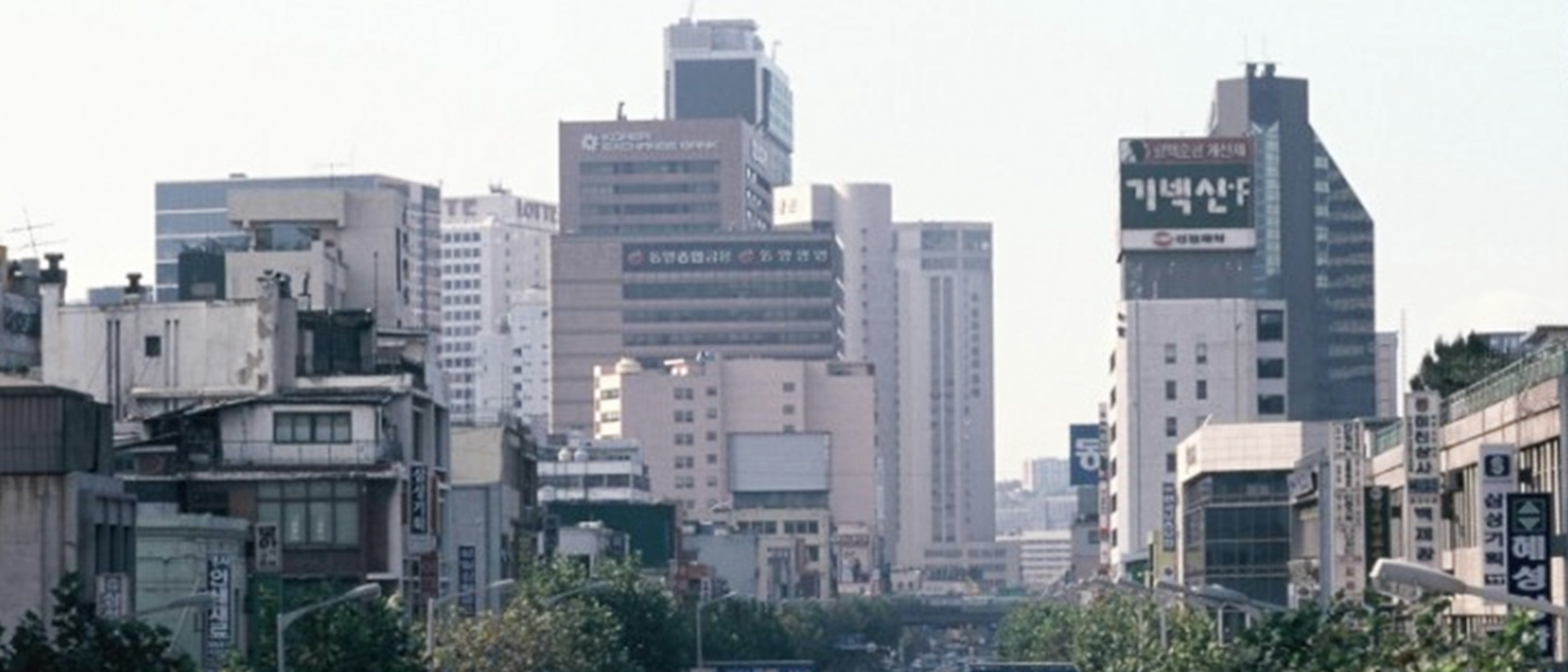
DOUZONE Eulji Tower
Take a look at the surrounding areas
Let's take a closer look around DOUZONE Eulji Tower! You may notice something different. Among the modern buildings, different styles of buildings are lined up. The annex of City Hall (former American Cultural Center, Gyeongseong Branch of Mitsui Mulsan) located right next to DOUZONE Eulji Tower is made of old stones. The Seoul Library that used to be the old City Hall stands in front of today's City Hall and adds weight to this extraordinary area. That's not all! If you follow the road along the round circle in the plaza in front of City Hall toward Taepyeong-ro, there is Deoksugung Palace, and if you follow towards Sogong-dong, there is Wongudan Alter behind the tiled gate. Next to Wongudan Alter, Sogong-ro radiate from the city in every direction. Come to think of it, Sogong-ro, Eulji-ro, and Taepyeong-ro are stretched aroud the round square of the City Hall. Oh! I came to realize that this is truly the center of Seoul! It can be seen as the starting point of Eulji-ro, the road to Sogong-dong. It is easy to recognize that the area is the very center of Seoul toward Namdaemun and Gwanghwamun. However, not long ago, there was a roundabout in the plaza in front of City Hall which worked as a transportation hub.
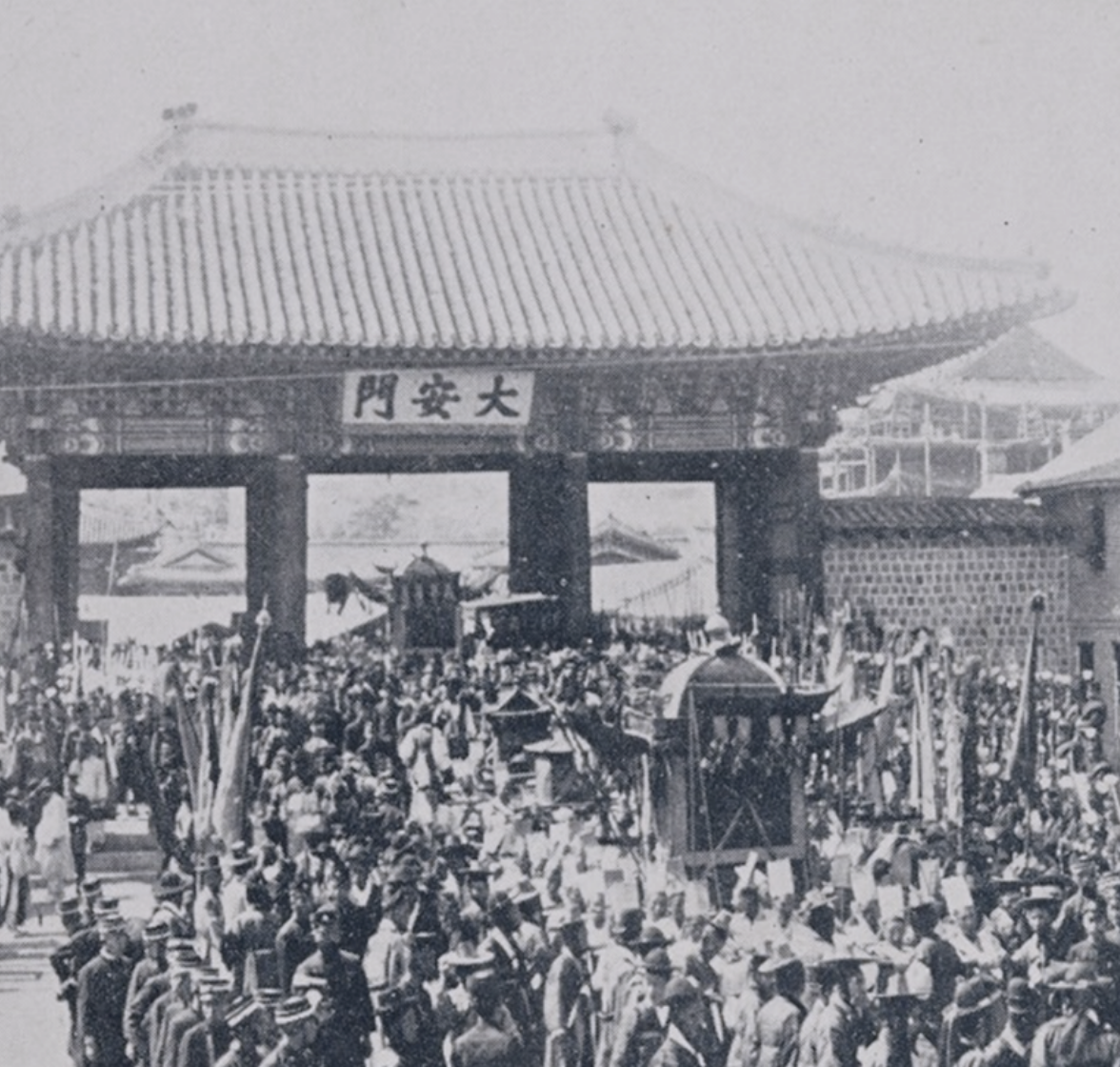
In front of Daehanmun Gate - from 1897 to 1919
The starting point of the history of the Republic of Korea
If you pass in front of Deoksugung Palace, you may definitely see the Changing of the Guard ceremony at Daehanmun Gate. It is frequented by many foreign tourists. However, during the Korean Empire, it served as a plaza where many Confucian scholars delivered the will of the people. After the assassination of Empress Myeongseong, King Gojong moved to Deoksugung Palace, which is located in the middle of Jeong-dong, after evacuating to the Russian Legation (Agwan Pacheon, 露館播遷), There, he tried to rebuild the country that was falling apart for the rest of his life. As a result, this area became the center for politics and administration where the supreme ruler of Joseon lived. In addition, Confucian scholars came to the front of Daehanmun to speak plainly to the King. After the declaration of the Korean Empire in 1897, many people came to stay the night for discussion during the People's Assembly. The death of King Gojong had a huge impact on the March 1st Movement. It is fair to say this is the starting point of the history of the Republic of Korea.
Parade of a royal carriage passing Daeanmun Gate (Source: National Palace Museum of Korea)
Plaza in front of City Hall - from 1987 to 2020
Into the center of history
In the final scene of the movie ‘1987,' there's a close-up of the plaza in front of City Hall. With the power of the people, they achieved democracy while awakening the nation with their slogans and enthusiasm of many citizens gathered in the plaza.
However, this place has transformed into a completely different one more than 10 years later due to the 2002 Korea-Japan World Cup held in Seoul. 20 years ago, many people garnered their attention to the area not only domestically but also globally. As Koreans, you will never forget the shouts of that day. At that time, citizens stayed up all night and shouted "Dae-han-min-guk!" for the victory of Korean soccer team in front of a large screen set up in the plaza. To enjoy this exciting festival, a lot of foreigners also gathered there. As Taegeukgi became a part of fashion and the national anthem became a popular song that everyone can enjoy with joy, the plaza that was used to be a place for heavy and solemn democratic struggles has transformed into a place for joyous festivals. As you can see, the plaza is considered a treasure trove of infinite stories that show our history.
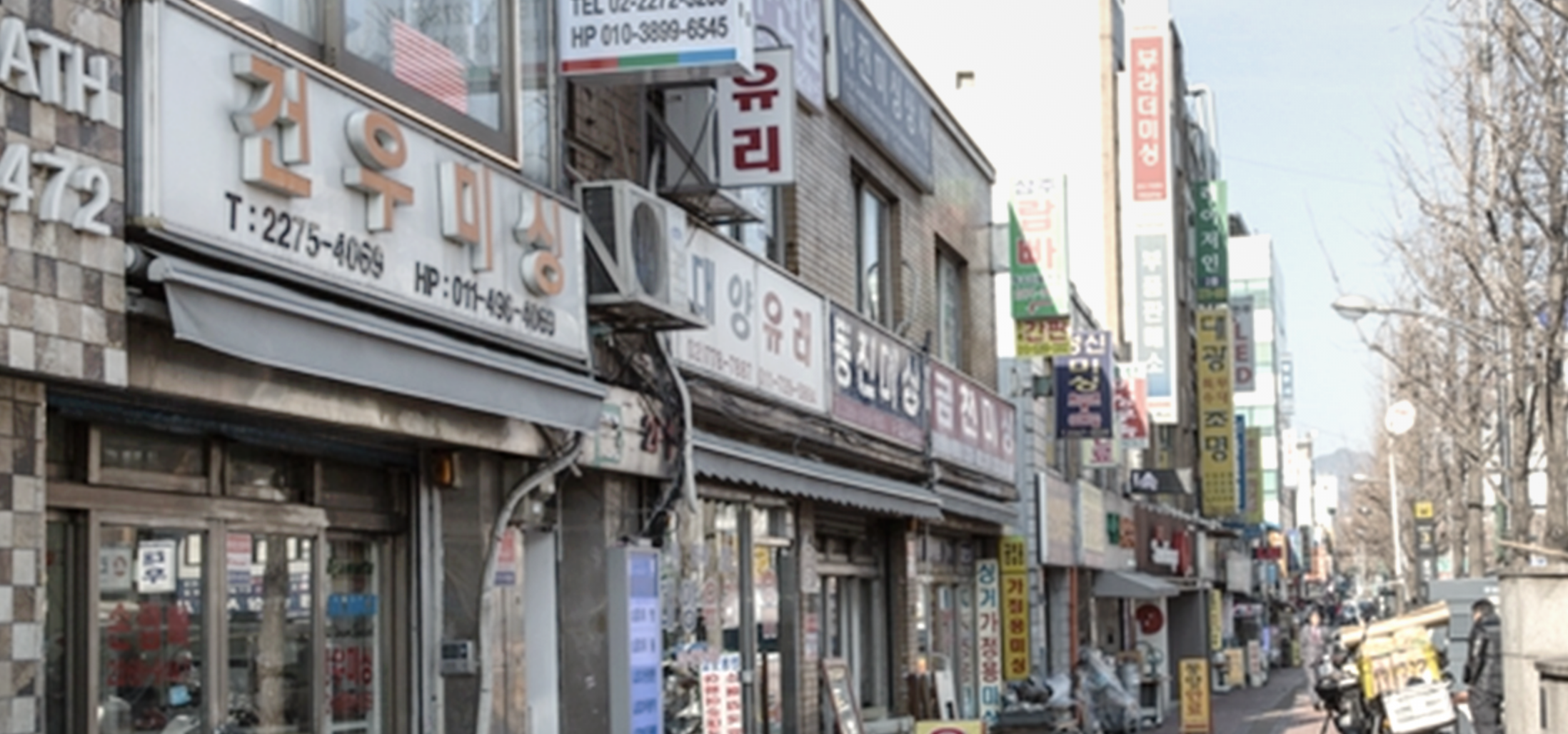
Eulji-ro
The starting point of our dreams and romance
Eulji-ro, where DOUZONE Eulji Tower is located, still retains the appearance of many buildings built after the liberation and Korean War, reminding the cityscape of modern Seoul. In Euljiro 3-ga, there are many shops that specialize in lighting, tile ceramics, electricity, tools, and furniture along a specialized street which was created to rebuild Seoul. After the war, many 4-story and 5-story buildings were built along the major highways in Seoul.
Located behind the modernized area, many factories popped up one after another in the underdeveloped residential area along the main highways to produce goods sold in shopping malls, creating a unique look of Eulji-ro. It is hard to count how many long-established restaurants are there to welcome the customers. Still, some buildings in Eulji-ro contain the old expression of building 'pilduing' in their names.' It's easy to recognize different shapes of foundation stones here and there. I truly believe that those handwritten signs represent the starting point of dreams and romance of our modern and contemporary history that is alive and breathing.

DOUZONE Eulji Tower - The mecca of the future industry
leading the state-of-the-art ICT
DOUZONE Eulji Tower is located at the starting point of Korea's history and culture. How many people have witnessed the historical moments occurred in this area?
In Joseon dynasty, powerless people would have gathered in front of Deoksugung Palace to watch King Gojong's funeral procession. And, during the Japanese colonial period, well-dressed modern girls and boys would have been walking around the area. Soldiers during the Korean War and university students in the 1980s would have passed by the area as well. In the early 2000s, people waved to cheer for the nation while hoping to win the game during the World Cup. Now, DOUZONE Eulji Tower is in the central business district of Eulji-ro where major public institutions, financial institutions, and domestic and foreign companies have gathered to lead a future-oriented business ecosystem by developing cutting-edge ICT technologies such as platform business, big data, AI, cloud, block chain, and fintech. In the 4th industrial revolution, they will expand their business areas beyond its domestic market.